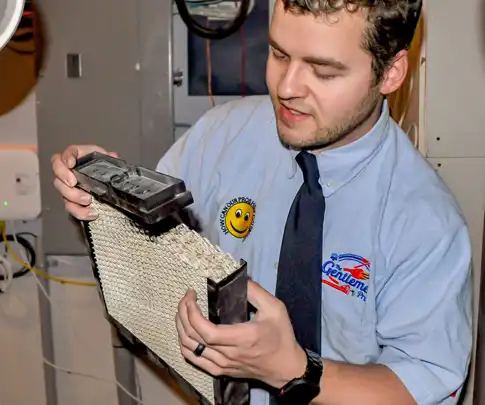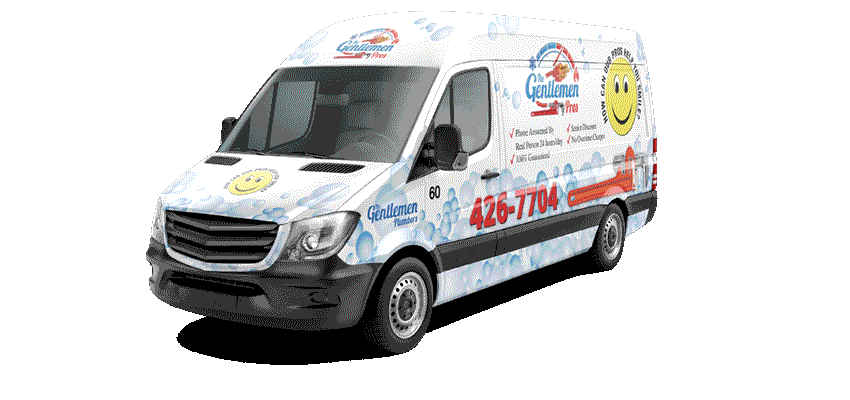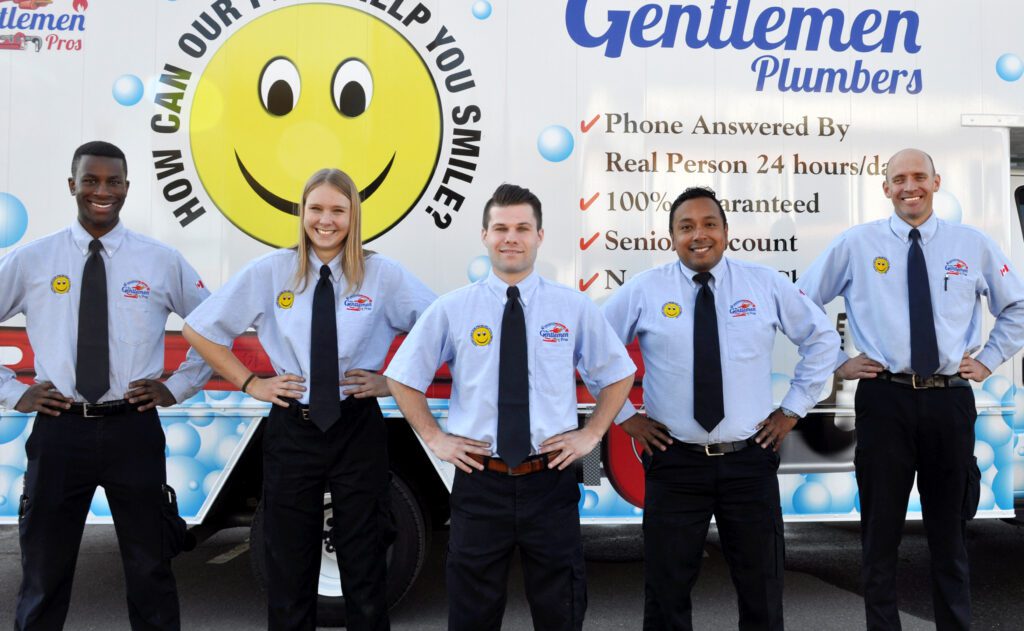We're In Your Neighborhood!

Same Day Service
Since 1992
Call The Gentleman Pros Now!
(780) 628-1734
We're In Your Neighborhood!

How Can Our Pros Help You Smile?
Edmonton's #1 Electrician!
Edmonton Humidifier Installation/Repair
Are you itchy? Are you tired of lugging your portable humidifier from room to room? Or are you just tired of the dry air and wish you had better humidity in every room of your house? A whole house humidifier is just what you need if you answered yes to any of those questions. A whole house humidifier (central humidifier) attaches to your HVAC system and disperses humidity to every room in your house.
“We had Riley B out today to do services on our furnace. He was very professional, easy to talk to, and worded everything in easy to understand terms. Our home is now warm and comfortable, and for a reasonable price. He was also super great with our toddler who seemed very interested in everything he was doing. I have used The Gentlemen Pros multiple times in the past year. For both plumbing, and heating. They always deliver, and get the job done. We have had great experiences with Terry in the past as well. We will definately keep using the Gentlemen Pros in the future. Thanks again!” Nathan M

Canadians spend up to 90 percent of our time indoors. So it’s important to have good indoor air quality and that includes a proper humidity level. Health Canada recommends a relative humidity level of between 30 percent and 35 percent in the winter and below 50 percent in the summer. It is difficult to maintain these humidity levels in Alberta without help from a humidifier.
Our experts can help you with every aspect of your whole house humidifier needs — from selecting and installing a new one to cleaning and maintenance on your current one.
Contact us and let’s chat about whole house humidifiers.
Symptoms of Low Humidity
How do you know if your house’s humidity level is too low? You can use a hygrometer to measure the relative humidity in the air. Or if you don’t have a hygrometer handy, you can try the ice cube test.
The ice cube test is really easy to conduct, it’s only three steps:
Step 1: put two to three ice cubes in a glass
Step 2: fill the glass with water
Step 3: Stir
Now wait three to four minutes. If moisture doesn’t form on the outside of the glass, your air is dry and you may need a humidifier.
Another way to tell is if you have low humidity is if you have any of the the following symptoms:
- Dry itchy skin
- Chapped lips
- Dry mouth and eyes
- Nose bleeds and increased snoring because the nasal membranes are dry
- Worsening allergy, asthma, and other respiratory symptoms
- Increased static electricity — are you zapping each other when you walk by?
- Dry and cracked wood furniture, floors, and decor items
These symptoms can get better with a proper humidity level.
Plus an indoor humidity level between 30 percent and 50 percent can limit the presence of infectious bacteria and viruses. Scientists have found that in dry air viral particles live longer, our nose and lungs have a harder time getting rid of viruses, and our interferons (proteins in our immune system which fight off infections) are not as effective. This adds up to dry air making us more likely to get sick.
Ideal indoor humidity levels also means you have less dust floating around in the air you breathe. When the air is too dry, the dust particles cannot adhere together and they can easily remain airborne. When the air has the right level of humidity, the dust particles stick together making themselves too heavy to float through the air. They quickly settle onto surfaces making it easier for you to clean.
You can defeat these effects with a whole house humidifier.
How to Choose a Whole House Humidifier
When looking to buy a new whole house humidifier, you need to make a few decisions.
What type of whole house humidifier do I want?
You will need to decide if you want a bypass, fan powered, or steam generating humidifier. All three attached to your HVAC system’s ductwork. And all three have pros and cons. Do a little research and figure out which style meets your needs and fits your budget.
If your house doesn’t have ductwork, your option is a self contained whole house humidifier.
What size whole house humidifier do I need?
The size of the humidifier you need is dependent on two things.
- The size of your home
Well, actually the volume of your home. This is measured in cubic meters (or cubic feet) by multiplying your home’s square footage by its ceiling height. This represents the amount of space that needs to be humidified.
A good rule of thumb is the larger your home the larger the humidifier you need. Though a 2,000 square foot house with 10 foot ceilings might need a larger humidifier than the same size house with eight foot ceilings.
2. Your home’s envelope
This is basically how drafty your house is. The building envelope is all the components that separate the indoors from the outdoors, i.e. windows, doors, exterior doors.
If you have a tight building envelope and it lets very little air move between inside and outside you might need a smaller humidifier compared to a similar house with a loose building envelope.
Generally, newer homes have a tighter building envelope.
Whole House Humidifier Maintenance
Like most things, your whole house humidifier will run more efficiently and last longer if it is properly maintained.
Whole house humidifiers can be prone to mineral build up, and bacteria and mould growth in the evaporator pad or the humidifier itself. The water line or drain line to the humidifier might get clogged or start to leak. We all know the damage unwanted and unknown water can cause. If your whole house humidifier is fan powered or steam generating, you don’t want water anywhere near the electrical outlet.
Steam powered humidifiers’ water containers may need to be replaced on occasion. How often it will need to be replaced is dependent on how hard your water is. Their parts should also be cleaned regularly to rid them of mineral deposits, bacteria, and mould. In fact, all types of humidifiers’ (whole house and portable) parts should be cleaned regularly.
Bypass and fan-powered whole house humidifiers need their evaporator pads replaced annually. If you have a drum style humidifier, its pad will need to be cleaned monthly.
Check humidistat on all types and models of whole house humidifiers regularly
If you decide to do the humidifier maintenance and inspection yourself, make sure you check the manufacturer’s instructions on your model’s maintenance needs. These can usually be found in the owner or installation manual.
Also, make sure you turn off the power to both the humidifier and the furnace and you turn off the water supply to the humidifier. Safety first!
And remember, once you’ve taken it apart to inspect and clean it, you need to put the humidifier back together again and test it to make sure it is working.
Our HVAC experts have the skills and knowledge and are more than willing to do the maintenance and inspection on your whole house humidifier. Please contact us to book an appointment.
Schedule Service
It's Saturday, No More Waiting Around!
Schedule Gentlemen Today!


Contact Us Today
- (780) 628-1734
- Monday - Sunday: 24 hours
- 24/7 Emergency Service
Service With A Smile
Plumbing | Heating | Electrical

Services
The Gentlemen Pros Plumbing, Heating & Electrical
- Phone answered by a real person 24/7
- service@tgpros.ca
- 6053 Gateway Blvd NW Edmonton, AB T6H 2H3
- (780) 701-9965
Copyright © 2022 the Gentlemen Pros. Marketing for home services by ETHOS.
Schedule Service Now & Save!
It's Saturday! No More Waiting Around!
Restrictions may apply.
How Can Our Pros Help You Smile?




